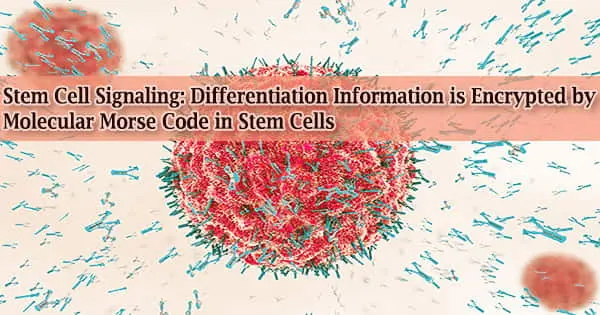Is it better to divide, differentiate, or die? Making the appropriate decisions at the proper time and place is what characterizes a cell’s activity, and it’s especially important for developing organisms’ stem cells. Decision-making is based on how information is processed by signaling protein networks.
For the first time, researchers led by Christian Schröter of the Max Planck Institute of Molecular Physiology in Dortmund and Luis Morelli of the Instituto de Investigacion en Biomedicina de Buenos Aires (IBioBa) have discovered that ERK, a key player in stem cell signaling, processes information via fast activity pulses. The length of the pulsing interval could carry crucial information for stem cell culture divergent fate decisions.
Stem cells go through a variety of developmental phases as they mature into the later embryo. Signaling molecules that are transferred between nearby cells influence the transition between those phases.
The fibroblast growth factor 4 is one of the most important signals during early mammalian development (FGF4). When a cell recognizes it, a network of signaling proteins processes the information, resulting in a physiological reaction.
Although the network’s core members, their roles, and interconnections are well understood, little is known about the signaling dynamics. But what does dynamics actually mean, and why are dynamics important?
Measuring ERK activity in single stem cells at short timescale is experimentally very demanding and was never done in such a way before. For the first time, we could observe, that ERK activity pulses every six to seven minutes, faster than similar signals previously shown in other cell systems. In single cells, the pulses occurred often very regularly one after the other, but pulsing patterns were strikingly different between individual cells.
Christian Schröter
Dynamics determine cell fate
Even though they use the same signal transduction network, two separate chemical signals cause different cellular responses differentiation and cell development in the posterchild example for the role of dynamics in signal transduction.
This is conceivable because the signal transduction system’s activation kinetics are distinct for each of the two chemical signals: One stimulates the system for a short period of time, resulting in cell proliferation, while the other activates the system for a lengthy period of time, resulting in differentiation. As a result, signaling dynamics are crucial in determining a cell’s fate.
However, many studies to date have been limited to looking at relatively slow dynamics that unfolded over hours and were consistent across all cells; they have been oblivious to quick dynamics, particularly when they differed between stem cells in the same dish.
ERK activity pulses every six to seven minutes
Christian Schröter and Luis Morelli’s teams were able to get a deeper grasp of the fast signaling dynamics in stem cells as a result of their work. The scientists were able to assess the activity of the main signaling molecule ERK in real time by implanting a fluorescent sensor into living stem cells. ERK activity is required for the translation of molecular information into a genetic response and, as a result, for stem cell differentiation regulation.
“Measuring ERK activity in single stem cells at short timescale is experimentally very demanding and was never done in such a way before. For the first time, we could observe, that ERK activity pulses every six to seven minutes, faster than similar signals previously shown in other cell systems. In single cells, the pulses occurred often very regularly one after the other, but pulsing patterns were strikingly different between individual cells,” Christian Schröter says.
The researchers also noticed that as the FGF4 signal increased, the number of pulses increased when summed over multiple cells, despite the fact that the lengths of single pulses did not alter.
Interdisciplinary approach Intercontinental collaboration
“This kind of data and its role on cell signaling is very hard to interpret. And that is the point, where our expertise kicked in,” Luis Morelli says, longstanding collaboration partner and group leader at the IbioBa, a partner Institute of the Max Planck Society.
“We had to develop a new theoretical approach to describe the dynamics in time series. By doing this, we saw that the duration of the pulsing interval might encode information, since we could find pulses and silence. We call this new dynamic feature intermittent oscillations.”
“Oscillations are a more and more recognized feature of signaling processes. We hypothesize that the intermittent oscillations we found in stem cells work like a kind of morse code that encodes differentiation information. Presumably, it is the switch from pulsing to silence that plays a decisive role. The question is now, what do the dynamics tell us about the organization of signaling in stem cells? How are cells able to read the oscillations, and how do they affect the cell’s behavior? I am convinced that close collaboration between experimentalists and theorists is required to unravel the origins and functions of this new dimension in stem cell biology one day,” Christian Schröter says.





